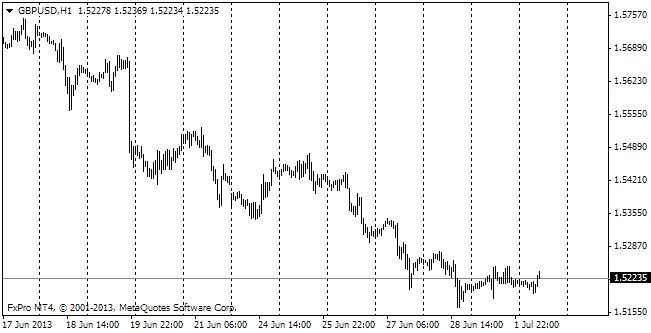EUR/usd
Friday's data on the US employment proved to be surprisingly favourable. The employment grew by 288K and the statistics for the preceding two months were revised up by 36K in total. The unemployment decline, which looks really shocking at first sight (from 6.7% to 6.3%) is ensured by another decrease in the workforce. In April the participation rate again occurred at 62.8%. This is a low, which has been hit only twice in modern times – in October and December 2013. Before that the indicator was that low only in the late 70s, but at that time it was in the uptrend because of the increase in the number of working women. Now the decline is caused by the growing army of elderly people. Gradually the baby-boomers, who in addition lost their jobs in the crisis, are giving up the hope to find a job and retire. It is remarkable that the total US aggregate weekly hours have returned to the pre-crisis highs. So, one more indicator has survived the consequences of the crisis. At the same time, fomc's members with caution remember the poor economic growth rates in the first quarter. Because of that we still have divergence of opinion, just like a week ago. The consensus remained unchanged. After a little of thinking, the market failed to find any reasons for sharper tapering, so the initial growth of USD, which made eurusd fall from 1.3867 to 1.3811, didn't hold out. The pair was bought back again. And at the end of the day it even reached 1.3880. There is a feeling that the dollar, which is traditionally strong in May, will fail to appreciate against the single currency this time. We need more positive news to overcome the caution, aroused by the GDP statistics for the first quarter. As you remember, the annualized growth then made 0.1%, i.e. was almost equal to zero.
GBP/USD
Unlike the euro/dollar the cable failed to close the day positive, but managed to play back the initial decline after the payrolls release. The strong domestic economic data and the impressive growth of housing prices put the question about the rate increase on the agenda. In this case the BOE can be stopped only by the uncertainty about the strength of the recovery. The Bank would prefer to wait until the economy finally got out of the pit, where it fell during the financial crisis. Yet, the MPC should be cautious with inflation. The employment growth can boost growth of wages and cause strengthening of inflation. Now, it is more likely that the expensive sterling will pull the prices down by means of cheapening imports, but the growth risks for inflation still persist and again become important.

USD/JPY
The primary purchases in the pair, as well as across the market, were followed by weakening of the dollar. On Friday the pair reached the peak of 103 yens per dollar, but today it is again below 102. It is largely caused by weakness of the dollar and the growing tensions in Ukraine. It is rumoured that at the end of the week it will be announced about the reduction of the corporate tax from about 35% to 20%. This is likely to boost demand for stocks and weaken the yen.

gold
Gold returned above 1300 in two powerful leaps. One occurred on Friday, when after the initial drop on the payrolls the rates quickly pulled back from 1273.5 by 10 dollars up. The further weakening of USD made it possible to closely approach 1300 at the closure of the week, and now trading is held around 1307. The favourable data on the global economy should contribute to stronger demand for this precious metal as a safe haven from faster inflation.
